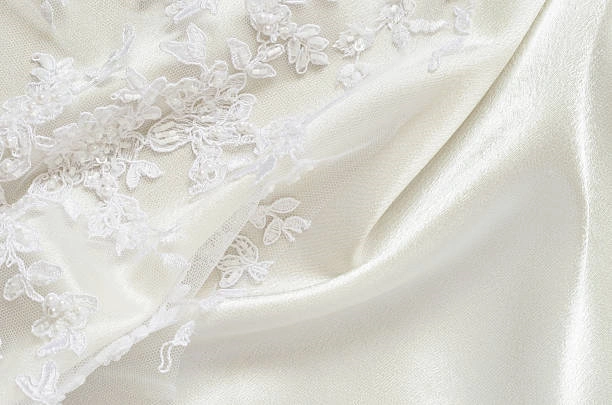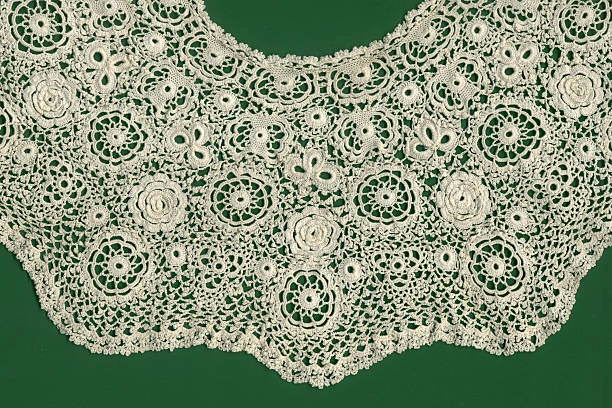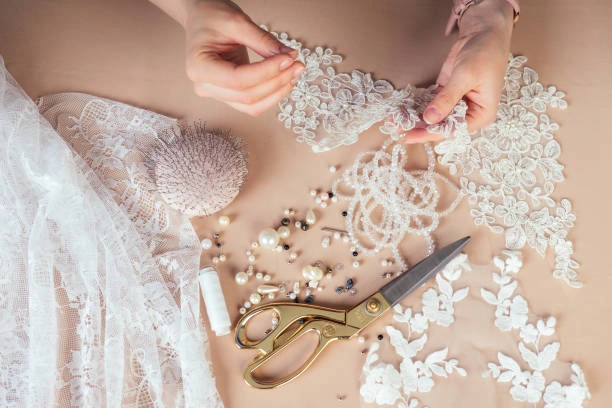From precious antique heirlooms to modern bridal gowns and exquisite dresses, lace adds a touch of sophistication to our lives. Yet caring for this delicate fabric, especially when it comes to cleaning, can be daunting. We often hesitate, fearing that one wrong move will ruin its beauty. But knowing how to properly clean lace fabric is simpler than you think, and it’s essential to preserving its delicate structure and pristine look for years to come. In this guide, we’ll walk you through the basic steps, common mistakes, and expert tips to ensure your lace always remains as beautiful as the day you first admired its intricate craftsmanship.
Why Cleaning Lace Fabric Demands a Gentle Approach

Before we delve into the “how-to,” let’s understand why cleaning lace fabric isn’t like tossing a pair of jeans into the washing machine. Lace is typically made from fine threads of cotton, silk, rayon, or synthetic blends, often woven into openwork patterns. These delicate fibers are susceptible to stretching, snagging, shrinking, or even dissolving if exposed to harsh chemicals, high temperatures, or aggressive agitation. The goal when cleaning lace is to remove dirt and oils without compromising the integrity of its fragile structure, ensuring its intricate beauty is preserved.
Pre-Cleaning Preparations: Essential Steps Before You Begin
A thorough pre-cleaning preparation is crucial for safe and effective lace care. This ensures we don’t inadvertently cause damage during the cleaning process. Here’s what we’ll need to consider and gather:
- Check the Care Label: This is our golden rule! The care label (if present) on your lace item will provide specific instructions regarding washing temperature, bleaching, and drying. Always defer to the manufacturer’s recommendations.
- Identify the Fiber Content: If there’s no label, try to determine the lace’s fiber content. This heavily influences the cleaning method. Silk and rayon laces are far more delicate than cotton or synthetic blends.
- Assess the Condition: Is the lace antique? Is it discolored? Are there any loose threads, tears, or embellishments (beads, sequins) that need special attention or removal before cleaning? Very old or fragile lace might be best left to professionals.
- Gather Supplies:
- Gentle Detergent: Opt for a mild, pH-neutral detergent specifically designed for delicate fabrics. Baby shampoo or a specialist silk/wool wash can also work. Avoid harsh chemicals, bleach, or strong stain removers.
- Clean Basin or Tub: A clean, plastic basin, sink, or bathtub.
- Clean White Towels: Several soft, absorbent white towels for blotting and drying.
- Mesh Laundry Bag (Optional but Recommended): For machine washing delicate lace, if the label allows.
- Drying Rack: A flat drying rack or a clean, flat surface.
- Distilled Water (Optional): Especially for antique or very delicate lace, as minerals in tap water can cause discoloration.
Hand-Washing Lace Fabric: The Safest Method

For most lace items, especially antique or very delicate pieces, hand washing is by far the safest and most recommended method. It allows us to control the agitation and temperature, minimizing the risk of damage. Here’s how to clean lace fabric by hand:
Step 1: Prepare the Washing Solution
Fill a clean basin or sink with cool or lukewarm water. The temperature should be no warmer than comfortable for your hand. Add a very small amount of your chosen gentle detergent. Swish the water gently to dissolve the detergent completely and create mild suds.
Step 2: Submerge the Lace Gently
Carefully submerge the lace item in the soapy water. Avoid dropping it in or letting it plop down, which can create unnecessary stress on the fibers. Allow the lace to soak for 15-30 minutes. For heavily soiled items, you might allow a longer soak, but never leave delicate lace submerged for hours.
Step 3: Gentle Agitation
Once soaked, very gently swish the lace in the water. Do not scrub, rub, or wring the fabric. Use a light, squeezing motion to encourage the water and detergent to pass through the lace. If there are specific soiled areas, you can very lightly press them between your fingers, but avoid any aggressive rubbing.
Step 4: Rinse Thoroughly
Drain the soapy water. Refill the basin with clean, cool water. Gently submerge the lace again and swish to rinse out the detergent. Repeat this rinsing process several times, changing the water each time, until all traces of soap are gone and the water remains clear. Residual soap can attract dirt or cause discoloration over time.
Step 5: Remove Excess Water
Carefully lift the lace from the rinse water, supporting its weight from underneath. Do not wring, twist, or squeeze the lace tightly. Lay the wet lace flat on a clean, dry white towel. Gently roll the towel and lace together, applying very light pressure to blot out as much excess water as possible. You can also press gently with a second dry towel.
Machine Washing Lace Fabric: When It’s an Option

While hand washing is preferred, some modern, more durable lace fabrics (especially synthetic blends) may be machine washable. Always check the care label first! If the label explicitly states machine wash, follow these guidelines for how to clean lace fabric in a machine:
Step 1: Prepare the Lace
Before placing the lace in the washing machine, pre-treat any visible stains by gently dabbing them with a tiny amount of diluted delicate detergent. Place the lace inside a mesh laundry bag. This bag is crucial as it protects the delicate lace from snagging on other items or the machine’s agitator.
Step 2: Select the Right Cycle
Choose the “delicate,” “hand wash,” or “gentle” cycle on your washing machine. Ensure the water temperature is set to cool or cold. Use a very mild detergent designed for delicates.
Step 3: Minimal Load
Wash lace items with a very small, light load of similar delicate items. Overloading the machine can cause excessive agitation and damage.
Step 4: No Spin or Low Spin
If your machine allows, select a “no spin” or “low spin” cycle. High spin speeds can stretch and distort delicate lace fibers. If you cannot select no spin, manually remove the lace before the spin cycle begins.
Drying Lace Fabric: The Most Critical Stage
The drying process is perhaps the most critical stage for preserving the shape and integrity of your lace. Improper drying can lead to stretching, shrinking, or distortion.
Table: Recommended Drying Methods for Lace Fabric
| Drying Method | Description | Best For |
|---|---|---|
| Flat Drying | Lay the lace item flat on a clean, dry white towel or a mesh drying rack. Reshape gently. | Almost all lace types, especially delicate, antique, or heavily patterned. |
| Hanging (Padded Hanger) | For less delicate, more structured lace garments, hang on a padded hanger, ensuring even weight distribution. | More robust lace garments, or items where stretching is not a concern. |
| Air Drying | Allow lace to air dry completely away from direct sunlight or heat sources. | All lace types. |
| Tumble Drying | NEVER RECOMMENDED. High heat and agitation will cause irreversible damage. | Absolutely no lace. |
Important Drying Tips:
- Reshape Gently: As the lace dries, gently reshape it to its original form. If it’s a garment, smooth out seams and edges.
- Avoid Direct Heat/Sunlight: Do not dry lace in direct sunlight or near heat sources (radiators, heaters), as this can cause yellowing, weakening of fibers, or excessive shrinkage.
- Patience is Key: Lace takes time to air dry completely. Ensure it’s fully dry before storing or wearing to prevent mildew.
Troubleshooting Common Lace Cleaning Challenges
Even with the best intentions, we might encounter some issues when cleaning lace fabric. Here’s how to address a few common challenges:
- Yellowing Lace: White or ivory lace can yellow over time due to age, environmental exposure, or improper cleaning. For natural fibers (cotton, linen), a very gentle oxygen-based whitener (like diluted OxiClean Free) can sometimes help, but always test on an inconspicuous area first. For silk or synthetics, professional cleaning might be the only option.
- Shrinkage: Often caused by too much heat or agitation. Unfortunately, shrinkage is usually irreversible. This underscores the importance of cool water and gentle handling.
- Stains:
- Oil-based stains: Gently dab with a tiny amount of diluted delicate detergent or a mild solvent (like plain rubbing alcohol on a cotton swab, tested first) and blot.
- Food stains: Rinse with cool water, then hand wash as directed.
- Rust stains: These are notoriously difficult. Specialized rust removers exist, but they can be harsh. Professional cleaning is recommended for rust.
- Always address stains as soon as possible.
- Fraying: If lace starts to fray after washing, it likely indicates pre-existing damage, or that the fabric was not properly reinforced before washing. Fray Check (a liquid sealant) can be used on non-garment items, or the edges may need delicate hand-stitching.
Caring for Your Lace Beyond Cleaning

Proper cleaning is just one aspect of maintaining your lace. Here are some additional tips for long-term care:
- Store Properly: Store lace items flat in acid-free tissue paper or on padded hangers to prevent creases, snags, and stress on the fibers. Avoid plastic bags, which can trap moisture and cause yellowing.
- Avoid Perfumes/Lotions: Apply perfumes, lotions, and hairspray before putting on lace garments, as these can stain or damage delicate fibers.
- Handle with Clean Hands: Always handle lace with clean, dry hands to avoid transferring oils and dirt.
- Regular Dusting (for home décor): For lace curtains or tablecloths, gently dust them regularly to prevent dust buildup from setting into the fibers.
Conclusion
Learning how to clean lace fabric effectively and safely is an invaluable skill for anyone who appreciates this exquisite textile. By understanding the delicate nature of lace, choosing the right cleaning agents, employing gentle techniques, and ensuring proper drying, we can confidently maintain the beauty and integrity of our lace pieces. Whether it’s a treasured family heirloom or a newly acquired garment, giving lace the care it deserves ensures it continues to weave its magic, adding elegance and charm to our lives for generations to come.
